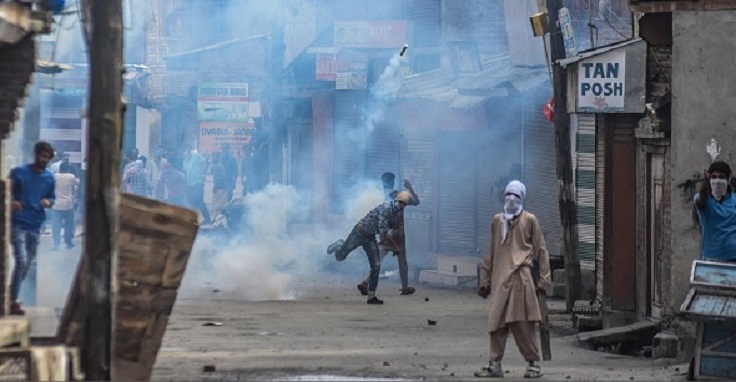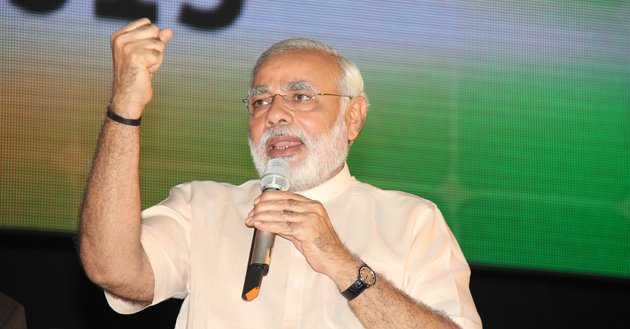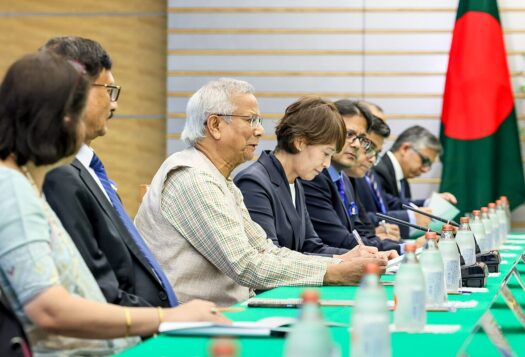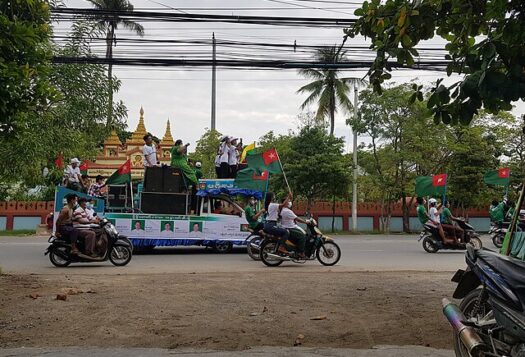
That the political and security situation in Kashmir is deteriorating is widely acknowledged by analysts and political leaders in both Srinagar and Delhi. But while people on the streets of Kashmir are angry and agitated, the ruling political and security helmsmen in Delhi refuse to acknowledge the gravity of the situation and lack urgency in addressing the anger of the people. This has created a situation of uncertainty and chaos in the Valley, which seems to be slipping into yet another summer of discontent.
Amid these grim circumstances, it is imperative that New Delhi opens channels of communication in Kashmir. That does not necessarily mean inviting Kashmiri separatist leaders for dialogue, which in fact doesn’t seem feasible in the current surcharged atmosphere. But it means acknowledging popular anger, and assuring the young agitating Kashmiris that the political leadership of the country understands the need to talk to them.
Discontent Fueling Insurgency
This is the second consecutive summer of unrest in Kashmir, following the wave of protests after the killing of popular Hizbul Mujahideen commander Burhan Wani last July. Every other day, there are encounters between government forces and militants, resulting in deaths on both sides, followed by protests and mass funeral processions for the slain militants. According to official data reported by Greater Kashmir, between January and mid-June of this year, 136 people were killed in militancy-related incidents across the state, more than four times the casualties during the same period last year. Among them, 81 were militants, 27 were civilians, and 28 were security personnel. Moreover, there is an alarming increase in homegrown militancy which has thrown up a severe security challenge for the forces. Though the militancy in Kashmir has managed to survive even after years of successful counterinsurgency by the Indian security grid, the renewed insurgency, driven by local Kashmiri youth, is worrisome for the security establishment. According to a newspaper report, since the death of Burhan Wani until March this year, about 250 Kashmiri youth have joined militancy.
While clashes between civilians and security forces have essentially become the daily routine, several incidents, in particular, have added to the already volatile situation. One was in April when an Indian Army officer used a civilian, Farooq Ahmad Dar, as a human shield against stone pelters by tying him to the bonnet of an Army jeep. The incident attracted widespread outrage as police lodged a complaint. A New York Times editorial termed it “cruelty and cowardice.” The incident was criticized by Indian Army veterans, including former Lieutenant General H S Panag, who said the incident will forever “haunt the Indian Army & the nation.” In the last week of June, two videos of Indian Army soldiers torturing youth surfaced on social media, which yet again drew outrage. These incidents of violence against civilians by government forces have added to the tension on the ground, giving people more reasons to protest and clash with government forces.
Political Betrayal
Though various factors are responsible for the tumultuous situation in Kashmir, one is particularly evident: over the years, several opportunities to establish peace have been wasted by successive governments at the state and central levels. For example, in May 2006, following a series of roundtable conferences on Kashmir by Prime Minister Manmohan Singh, the Congress Party-led United Progressive Alliance (UPA) government formed five working groups to address the issues facing Jammu and Kashmir (J&K). Their recommendations regarding confidence-building measures (CBMs) across segments of society, strengthening center-state relations, ensuring good governance, strengthening relations across Line of Control (LoC), addressing unemployment, rehabilitation of victims of violence and economic empowerment were not implemented. In the second instance, after the bloody agitation in the summer of 2010, the UPA government again formed a three-member group of interlocutors, which held year-long discussions with various stakeholders in J&K and submitted a report to the government. That too was not implemented. This has caused deep and perpetual disappointment among the population.
In this backdrop, it is likely that similar initiatives by New Delhi will receive only a lukewarm response. Yet the only way to end the current impasse and bring a sense of security among the harried populace is to talk to the people of Kashmir.

No Alternative To Dialogue
The current National Democratic Alliance (NDA) government, led by the Hindu nationalist Bharatiya Janata Party (BJP), has adopted a tough stance and refuses to have a dialogue with Kashmiri separatist leaders. Chief Minister Mehbooba Mufti has more than once emphasized the need for dialogue with separatists in Kashmir, only to be subtly or overtly rejected by the Union government.
This stand-off on talks has worsened the overall situation in Kashmir. The Valley is witnessing frequent shutdowns called by separatist leaders, violent clashes between protesters and police, and gunfights between Indian security forces and militants. Even though the Army-led security grid in Kashmir exhibits confidence to bring the situation to “normal” soon, the anger and defiance of the people in this sustained unrest are unrelenting. The assertion of the present government of India that the current phase of turmoil will be overcome is misplaced. The number of militants can be lessened by neutralizing them, but there is no alternative to addressing the dominant popular anger other than opening channels of communication with the Kashmiris, particularly youth who are at the forefront of this agitation.
In this scenario, summarily rejecting dialogue on the political nature of the issue only adds to the accumulating popular resentment. The need for dialogue in Kashmir is being emphasized by several of the country’s political leaders and former security and intelligence experts. Former chief of Research and Analysis Wing (RAW), A S Dulat, known for his expertise on Kashmir, said in an interview that there is no other option than to “talk to Kashmiris about Kashmir.” Even BJP leader and former External Affairs Minister Yashwant Sinha in an article argued that Kashmir is “a political issue and has to be resolved politically and not by force.” There have also been similar voices in the Indian intelligentsia asking New Delhi to talk about Kashmir rather than choosing to ignore the big elephant in the room.
The increase in militancy-related incidents, growing numbers of local youth joining militants’ ranks, and growing popular support for the insurgency should wake up the political leadership of India, and push the BJP-led ruling alliance to explore political options to address the unrest in Kashmir, rather than relying on military measures.
***
Editor’s Note: Click here to read this article in Hindi
Image 1: Via Yawar Nazir, Getty Images
Image 2: Via Narendra Modi, Flickr


